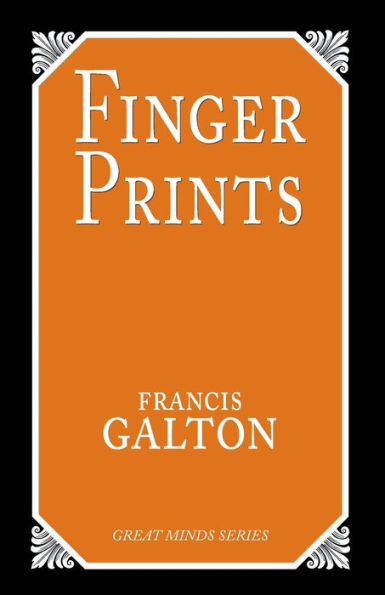

-
PICK UP IN STORECheck Availability at Nearby Stores
Available within 2 business hours
Related collections and offers
Overview

Product Details
| ISBN-13: | 9781591024125 |
|---|---|
| Publisher: | Rowman & Littlefield Publishers, Inc. |
| Publication date: | 06/01/2006 |
| Series: | Great Minds Series |
| Pages: | 196 |
| Product dimensions: | 5.50(w) x 8.50(h) x 0.50(d) |
About the Author
Statistician, world traveler, eugenicist, and pioneer in the use of fingerprints as a method of identification, SIR FRANCIS GALTON is best known for his investigations into heredity and human intelligence.
Galton was born on February 16, 1822, in Sparkbrook, England, into a prominent Quaker family. His maternal grandfather was physician Erasmus Darwin, who penned a book that outlined his ideas of botany and generation. The youngest of seven children, Galton was also a cousin of Charles Darwin—a profound influence on Galton’s scientific work.
Galton attended King Edward’s School in the late 1830s and later pursued a medical career, at his family’s insistence, first at King’s College in London and later at Trinity College, Cambridge. Displeased with his choice of study, Galton switched to mathematics before falling ill, which, coupled with his father’s serious health problems, rendered him unable to finish his degree. Following his father’s death in 1844, the financially secure Galton began to travel abroad, initiating his scientific career with an excursion to Africa. Although unsuccessful in his attempt to find a southwest passage to Lake Ngami, situated north of the Kalahari Desert, Galton was elected a fellow of the Royal Geographical Society in 1853, the same year he married Louisa Jane Butler.
Six years later, Charles Darwin published his famous Origin of the Species, which reversed Galton’s train of thought. Instead of thinking that all humans have essentially the same capabilities at birth, Galton now believed that heredity, not just the environment, played a role in shaping a person. In fact, Galton coined the phrase nature versus nurture, a concept still used today in the debate over the factors that influence human development.
Using his background in mathematics to add scientific validity to the fledgling field of heredity, Galton devised new statistical concepts, such as correlation, a measure of the relationship between two variables, and regression, which predicts the average of a random variable based on other random variables. About the same time that Gregor Mendel crossbred sweet peas in his study of genetics, Galton hypothesized that qualities such as intelligence were passed to each generation through heredity. He supported this argument with an analysis of obituaries in the (London) Times, resulting in his 1869 publication, Hereditary Genius. This built the foundation of Galton’s work in eugenics, another term he invented for his notion that the human race could be improved upon by selective breeding. Galton’s Natural Inheritance (1889) summarized his work on correlation and regression. Statistician Karl Pearson furthered Galton’s work at University College, London.
Among the data that Galton gathered were collections of fingerprints. Galton demonstrated that not only did fingerprint patterns remain the same on an individual from childhood through adulthood, but also each person has a unique set of prints, which can be used as a basis of identification. Galton, in collaboration with Sir Edward R. Henry, persuaded Scotland Yard to use fingerprints as a method of identifying criminals in 1901.
Awards that Galton received are the Royal Society’s Royal, Darwin, and Copley Medals (1876, 1902, and 1910, respectively); the Anthropological Institute’s Huxley Medal (1901); and the Linnean Society’s Darwin-Wallace Medal (1908). The British Association’s general secretary between 1863 and 1867, Galton was knighted in 1909. In Surrey, England, Galton died on January 17, 1911.
Galton’s bibliography remains incomplete because he wrote prolifically in a variety of publications, some well known and some obscure. Galton published at least 340 books and papers, some of which are still cited in current scientific articles. Books by Galton include Tropical South Africa (1853), English Men of Science: Their Nature and Nurture (1874), Psychometric Facts (1879), Record of Family Faculties (1884), Finger Prints (1892), and Probability, the Foundation of Eugenics (1907).
